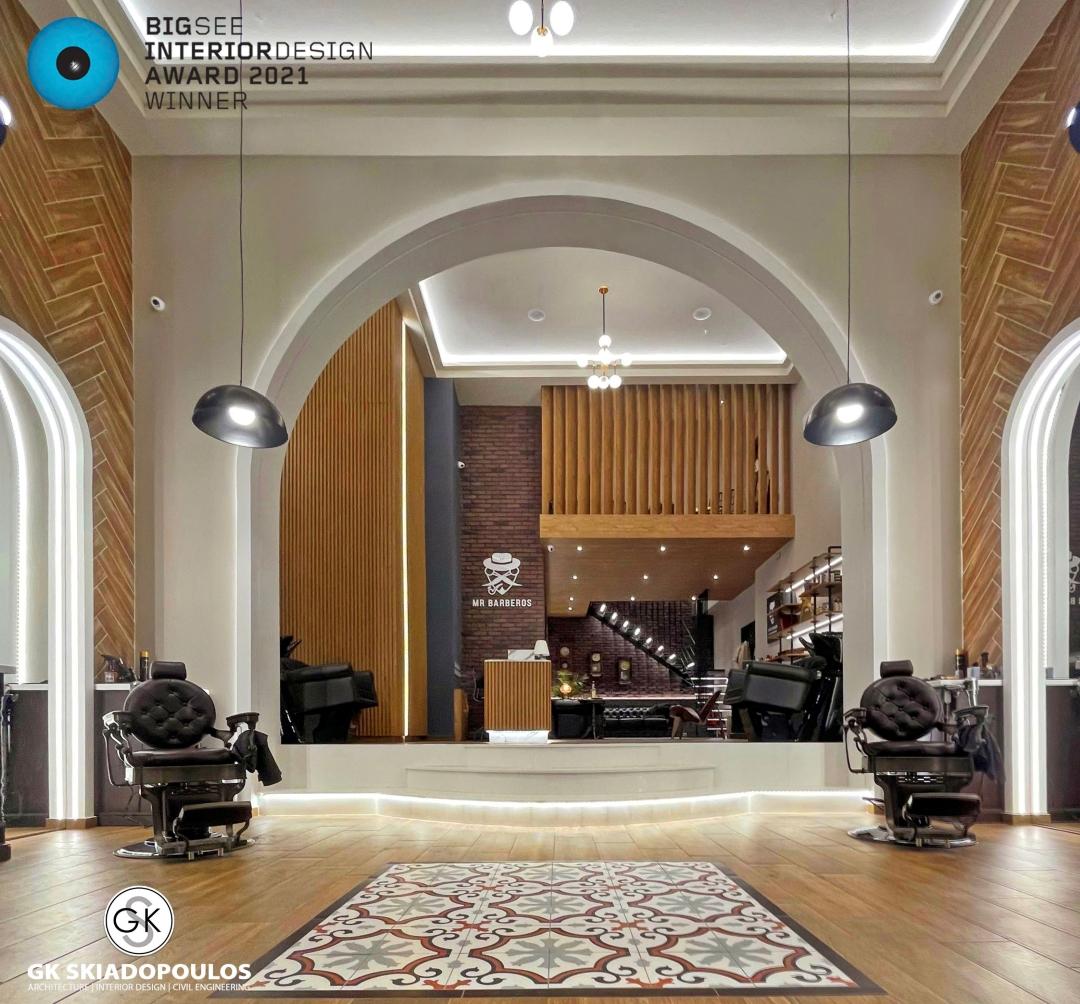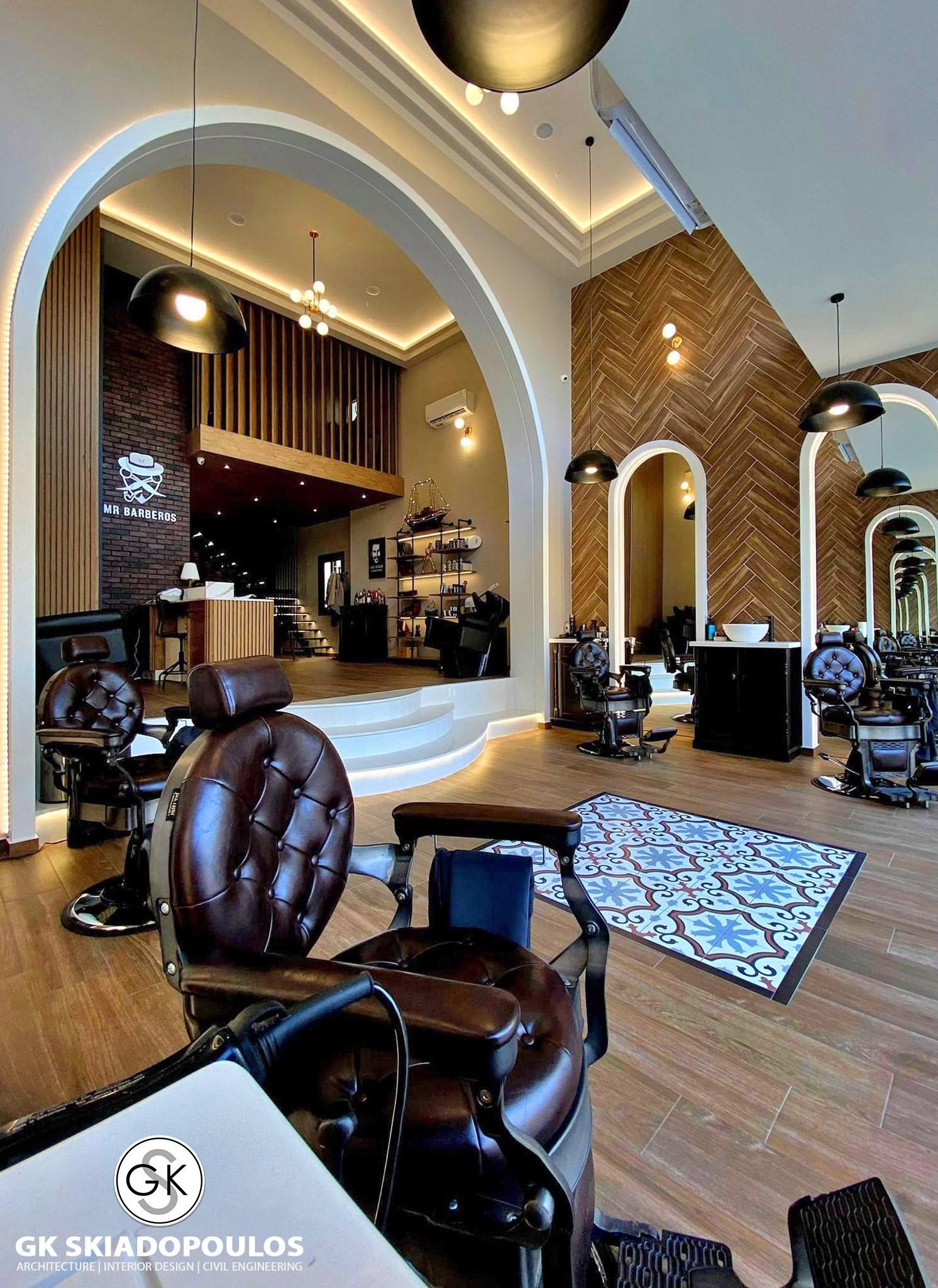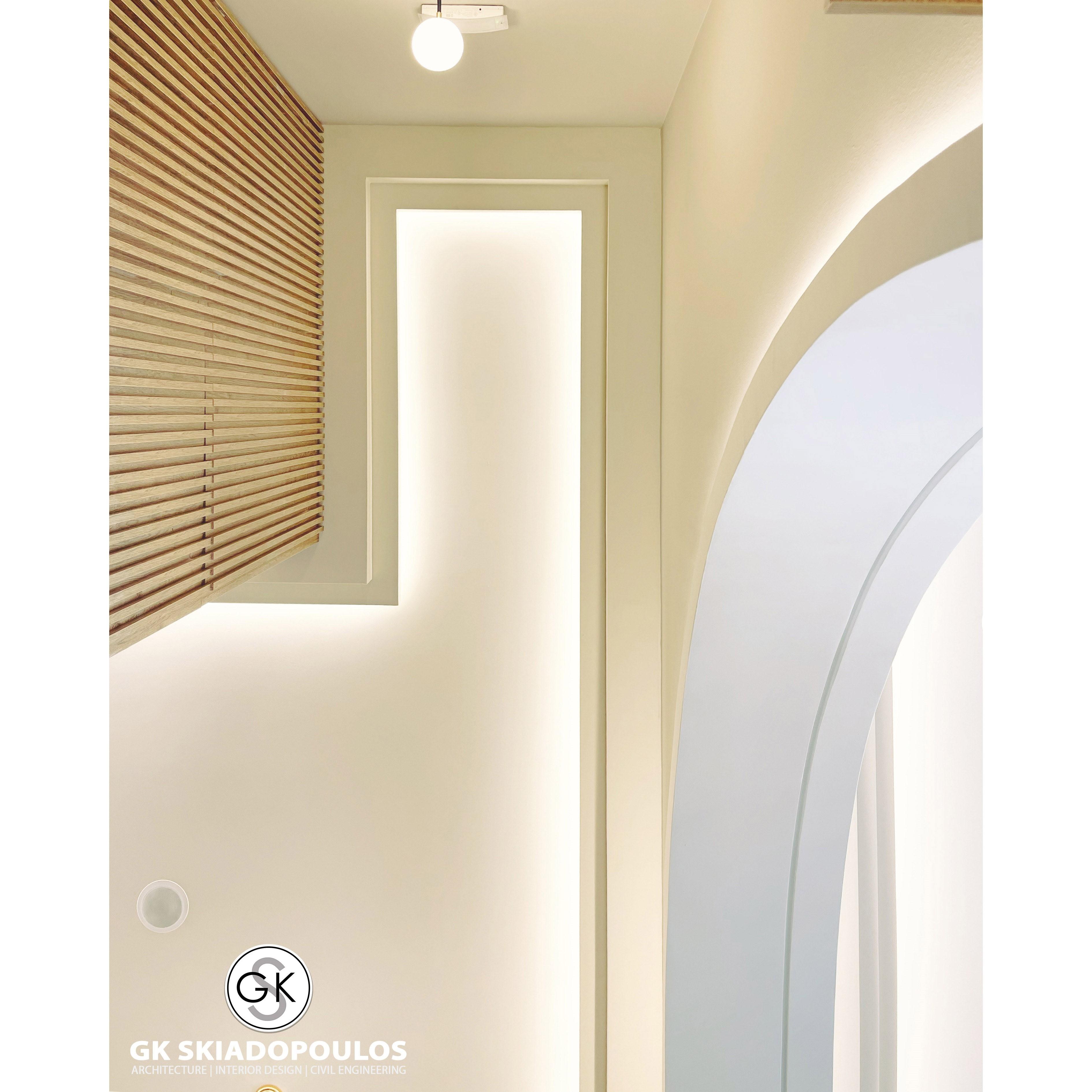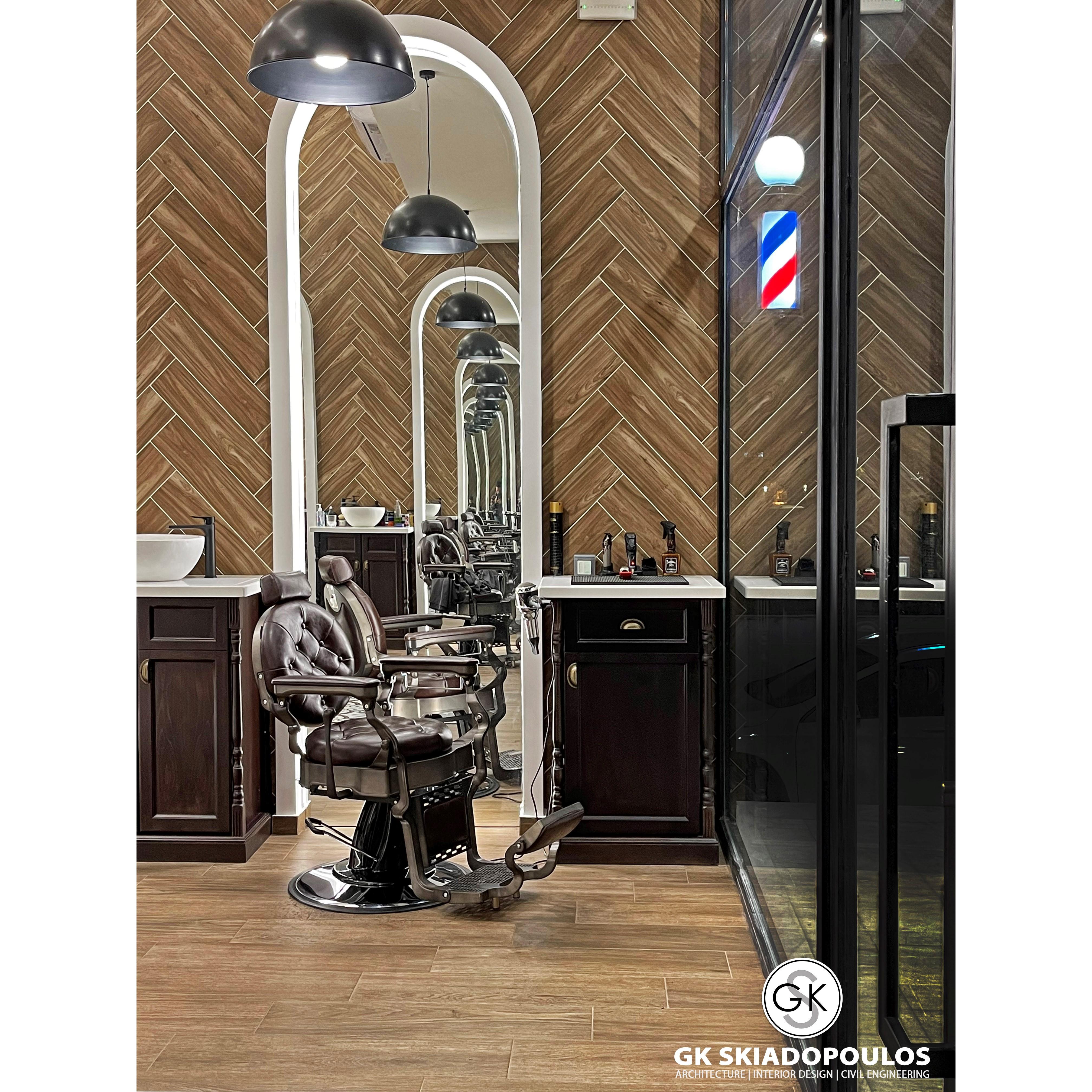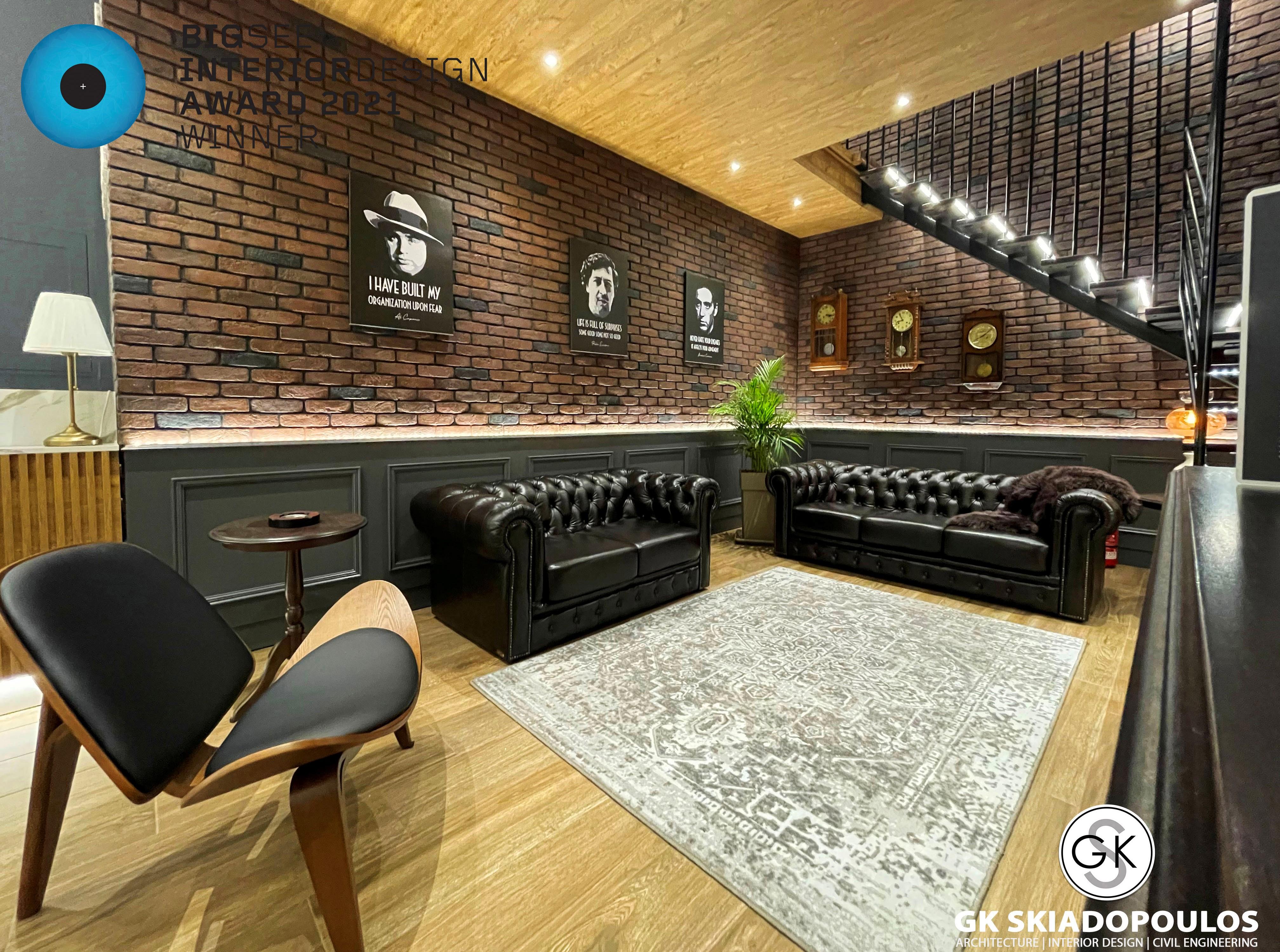mr. Barberos Interior Design
Awards & Recognition:
-
Winner of the Big SEE 2021 Interior Design Award
-
Silver Award, Interiors Awards 2021
Design Concept & Inspiration:
Mr. Barberos is conceived as a synthesis of nostalgia and modernity: it draws from the rich visual and cultural tradition of Southeast European barbershops, especially those in the Dodecanese, responding to both memory and place. The team has captured the archetypal forms — bold geometrical arches that are common in Dodecanese architecture — but reinterpreted them with a clean, contemporary sensibility. The goal is to evoke familiarity and comfort, while delivering a fresh, elevated experience.
Spatial Experience & Layout:
-
Volume & Scale: The interior is generous in volume: high ceilings, spacious circulation zones, and open sight-lines amplify a sense of airiness. These volumetric qualities allow natural light (where available) to play, and support a hierarchy of space — from public waiting/entry zones to more private service seats.
-
Ergonomics & Circulation: Great attention is paid to the distances between clients, barber stations, and staff’s back-of-house. This ensures not only comfort but also smooth movement for both staff and clients, as well as safety. The spatial arrangements avoid crowding, allow clear paths, and balance privacy with openness.
Materials & Texture Palette:
-
Wood: Warm, tactile woods are used for furniture, paneling, possibly cabinetry and detailing. The grain and finish contribute to both the vintage and natural feel.
-
Marble: Elegant, refined surfaces introduce a sense of luxury and solidity. Marble may appear in countertops, flooring or feature walls. Its polished texture contrasts with the other more rustic or matte materials.
-
Brick: Exposed brick adds texture, depth, and a raw, earthy counterpoint to marble’s sheen. Brick may also serve to evoke tradition, craft, and the rustic charm of older barbershops.
These materials are composed so that none overwhelms: the rustic (brick, wood) and the refined (marble) are balanced, and transitions between them are handled with care so the eye moves comfortably.
Architectural Forms & Detailing:
-
Arches: The geometrical arches are structural and visual anchors. They may appear over entrances, windows, or as partition elements. Their geometry recalls traditional forms, but the proportions, lines, or framing may have been simplified or stylized to avoid ornament-overload and to maintain an elegant modernity.
-
Lighting: Hidden LED lighting is a key strategy: it illuminates indirectly, accentuates volumes and forms, highlights materials (for example, light grazing brick or undercut wood detail), and contributes to warmth. Lighting likely plays both functional roles (at workstations, mirrors) and atmospheric roles (highlighting arches, creating soft ambient glows).
Ambience & Mood:
The overall atmosphere is warm, inviting, with a balance of vintage charm and polished modernity. The interplay of light and shadow, hard and soft textures, solid and open forms, all contribute to a sensory experience: the comfort of time-worn materials and craft, paired with the clarity and crispness of contemporary design. Clients likely feel both at home and treated to something special.
Functional & Operational Considerations:
-
Hygiene, visibility, comfort are prioritized: sufficient spacing means good airflow, low risk of congestion.
-
Furnishings and finishes are probably chosen not just for aesthetics but durability: wood, stone, and brick can wear well when properly treated.
-
Ease of cleaning, maintenance of lighting and surfaces, and client flow from entrance → waiting → service → exit are all embedded in the layout.

